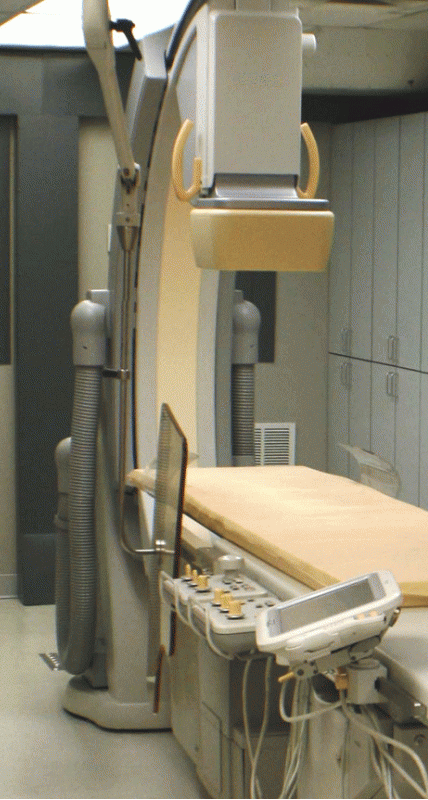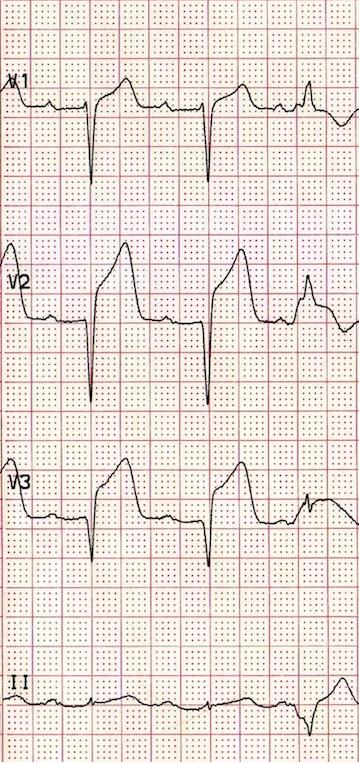Hemodynamics
Adenosine Challenge for Pulmonary Hypertension
Pulmonary hypertension is an abnormal elevation in pulmonary arterial pressure and can lead to right heart failure. It may be the result of left heart failure, pulmonary vascular disease, thromboembolism, or a combination of these factors. Understanding the cause of pulmonary hypertension is essential before administering treatment.
Measurement of pulmonary vasoreactivity is important in the diagnosis and management of pulmonary hypertension. Patients that respond to pulmonary vasoreactivity have been shown to respond well to long-term calcium channel blocker therapy. If there is no pulmonary vasoreactivity response, calcium channel blocker therapy will not be successful. The gold standard for testing pulmonary vasoreactivity is to use inhaled Nitric Oxide. An infusion of IV Adenosine is also used in the Cardiac Cath lab to test for pulmonary vasoreactivity.
Adenosine Challenge: How is it done?
In the cardiac catheterization lab, a right heart catheterization is performed obtaining pressure measurements and blood venous gas samples. Adenosine infusion is then started peripherally to begin pulmonary vasodilation. The infusion can be started at 50 mcg/kg/min and increased by 50 mcg/kg/min every 2 minutes until reaching a maximum dose of 500 mcg/kg/min. This tutorial will start with an infusion dose of 100 mcg/kg/min for 2 minutes and increase by 100 mcg/kg/min every 2 minutes until a maximum dose of 300 mcg/kg/min is reached. The patient should be closely monitored for vasodilation effects on systemic circulation. If the systolic pressure falls below 85 mm Hg or the patient complains of dyspnea, the Adenosine infusion should be discontinued. Monitor the patient until hemodynamics return to baseline.
During the infusion of Adenosine, changes in hemodynamics should be recorded. Paying attention to the mean pulmonary arterial prssure, PCWP, and cardiac output will allow assessment of pulmonary vascular resistance. A positive pulmonary vasodilator response is one in which the mean pulmonary arterial pressure decreases by 10 mm Hg and achieving a mean pulmonary arterial pressure <40 mm Hg, and a normal or high cardiac output. Only patients that satisfy this criteria should receive long-term oral calcium channel blocker therapy.
Adenosine Infusion Calculator for Pulmonary Hypertension
Calculation for Infusion Rate
[Dose (mcg/kg/min) * weight (kg) * 60 (min/hr) ] / Adenosine concentration (mcg/ml)
Example: If you need to infuse 100 mcg/kg/min on a patient that weights 78kg and your Adenosine is 3 mg/ml, then:
[ 100 (dose) * 78 (kg) * 60 (min/hr) ] / 3000 (mcg/ml)
= 468,000 / 3000
= 156 mL/hour
Adenosine challenge
Using a 3mg / ml concentration of Adenosine
This scale is a reference only. You should calculate the rate to verify the infusion rate!
| Patient Weight | Patient Weight | 100 mcg/kg/min | 200 mcg/kg/min | 300 mcg/kg/min |
| lbs | kg | mL / hour | mL / hour | mL / hour |
|---|---|---|---|---|
| 94 - 104 | 43 -47 | 90 | 180 | 270 |
| 105 - 115 | 48 - 52 | 100 | 200 | 300 |
| 116 - 126 | 53 - 57 | 110 | 220 | 330 |
| 127 - 137 | 58 - 62 | 120 | 240 | 360 |
| 138 - 148 | 63 - 67 | 130 | 260 | 390 |
| 149 - 159 | 68 - 72 | 140 | 280 | 420 |
| 160 - 170 | 73 - 77 | 150 | 300 | 450 |
| 171 - 181 | 78 - 82 | 160 | 320 | 480 |
| 182 - 192 | 83 - 87 | 170 | 340 | 510 |
| 193 - 203 | 88 - 92 | 180 | 360 | 540 |
| 204 - 214 | 93 - 97 | 190 | 380 | 570 |
| 215 - 225 | 98 - 102 | 200 | 400 | 600 |
| 226 - 236 | 103 - 107 | 210 | 420 | 630 |
| 237 - 247 | 108 - 112 | 220 | 440 | 660 |
| 248 - 258 | 113 - 117 | 230 | 460 | 690 |
| 259 - 269 | 118 - 122 | 240 | 480 | 720 |
| 270 - 280 | 123 - 127 | 250 | 500 | 750 |
| 281 - 291 | 128 - 132 | 260 | 520 | 780 |
| 292 - 302 | 133 - 137 | 270 | 540 | 810 |
| 303 - 313 | 138 - 142 | 280 | 560 | 840 |
| 314 - 324 | 143 - 147 | 290 | 580 | 870 |
| 325 - 335 | 148 - 152 | 300 | 600 | 900 |
| 336 - 346 | 153 - 157 | 310 | 620 | 930 |
| 347 - 357 | 158 - 162 | 320 | 640 | 960 |
| 358 - 368 | 163 - 167 | 330 | 660 | 990 |
References
- Oudiz R., Langleben D., (2005) Cardiac Catheterization in Pulmonary Arterial Hypertension: An Updated Guide to Proper Use. Advances in PH Journal, volume 4 (no 3). Retrieved from www.phaonlineuniv.org/Journal/Article.cfm?ItemNumber=645
- Rich, S. Medical Update For Healthcare Professionals: Pulmonary Hypertension. Retrieved from www.uchospitals.edu/specialties/heart/services/pulmonary-hypertension/medical-update.html

